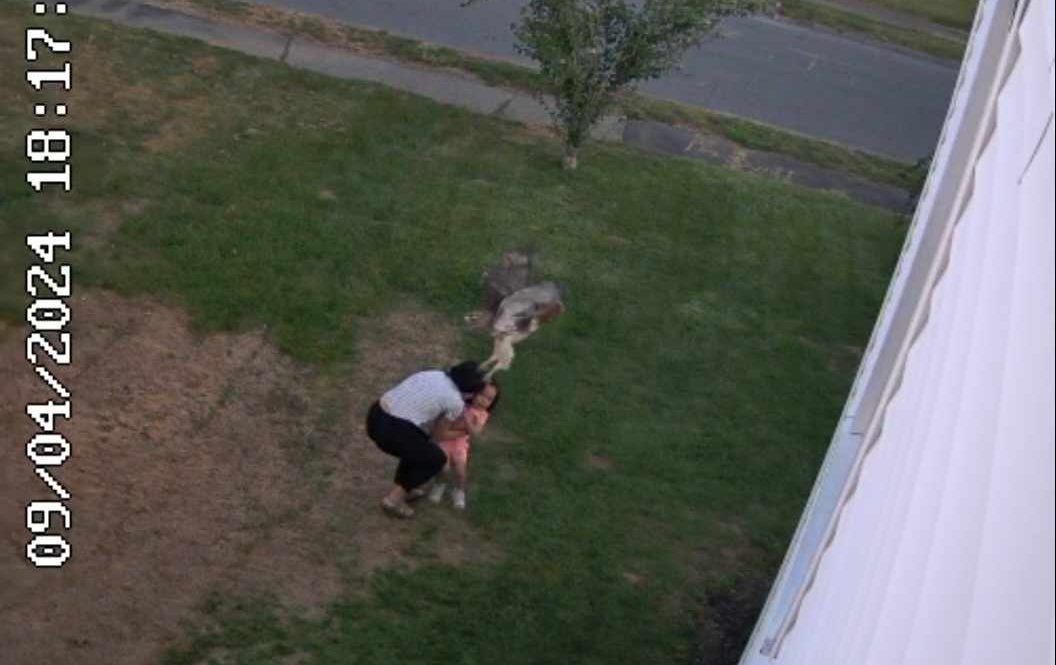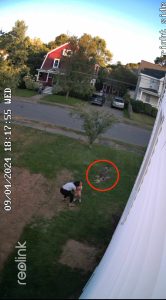
Close Encounters of the Avian Kind
September 9, 2024
• A Needham family came face-to-face with a hawk in their front yard when it swooped down in front of their 2-year-old child.
In one moment, Maya Lim and her young daughter Maeve, 2, were playing in front of their house. In the next, a hawk dove down, as if ready to snatch the toddler.
Lim’s husband Phi Tran was cleaning around the house when he heard a scream and ran outside.
“The next thing I see is those big wings flying towards them,” Tran said. “Everything went very quickly.”
The family, who have lived in the Heights for a year, said they’ve seen the red-tailed hawk in the neighborhood, often perched on the electric post, flying above the trees or squawking from a distance. But Tran said he “never thought one day he would plunge.”

Maeve likely didn’t see the bird coming, as her back was turned, but Lim stepped into action — whether it was motherly instinct or quick reflexes, Lim shouted and grabbed her daughter, which seemed to scare the hawk away.
“My first reaction was just to run away,” Lim said. “It’s your first instinct to protect your child. I didn’t have time to process it.”
Fortunately, the hawk didn’t make contact with either of them, but the entire encounter — which took place last Wednesday around 6:20 p.m. — was captured on their home security cameras.
While the hawk’s close proximity may have scared the family, state wildlife rehabilitator Alison Webber said she thinks the incident was likely “just a fluke thing.” Hawks don’t attack people, Webber said, and she thinks the hawk may have descended for a mole or vole in the grass nearby that Lim and Maeve couldn’t see.
Hawks typically eat rodents, small rabbits, gardener snakes, earthworms, frogs and just about “anything they can catch,” Webber said — but nothing toddler-sized.
“They’re hungry, they want food, and they go for it,” said Webber, who specializes in songbirds and raptors. “And that’s why a lot of them get hit by a car. They fixate on that prey, they swoop across the road and get hit because they just want their mouse.”
Hawks and other predators, like great horned owls, will typically only swoop down on humans and hit them with their wings in defense of their nest and babies, Webber said.
The red-tailed hawk in the video looks to be an immature bird, based on the lack of red color on its tail, Webber said. Young birds of prey learning to hunt can sometimes make errors in judgment as they’re learning to fend for themselves, she said.
The hawk appeared just as surprised as Lim, Webber said, since they both reacted and retreated.
“It looks like a juvenile bird, probably inexperienced, and as I say, they always come out of the nest dumb as dirt because they don’t know anything other than being fed by mom and dad,” Webber said. “All of a sudden, they’re fledging and out into a world that they know nothing about, and they don’t know at this point that humans are enemies.”
Had Lim not been kneeling beside her daughter at the time, Tran isn’t sure how Maeve may have reacted.
“I think the hawk changed his mind when he saw Maya standing up and saw she was bigger than she appeared,” he said. “But I don’t think the hawk is big enough to pick [Maeve] up.”
They’ve heard about other wildlife sightings, like foxes and animals of prey, but nothing about hawks. Over the last few months, Tran said they’ve seen fewer rabbits, chipmunks and smaller animals outside, possibly to avoid the hawks in the area.
“Maybe the hawk is hungry or something and desperate,” Tran said, laughing.
Maeve is seemingly unfazed by the ordeal but did quiet down when she sensed her mother’s fear, Tran and Lim said. Going forward, they said they may be more cautious with letting her play outside, even though she always has adult supervision.
Tran shared footage of the incident to the Needham Facebook group, but he hopes residents don’t think poorly of hawks as a result. He does caution others to keep an eye on their surroundings.
“This is where they belong, but obviously be careful,” Tran said.
Webber sees the experience as a lucky “close encounter with nature.”
“I would have loved to see a hawk that close in the wild,” she said.


